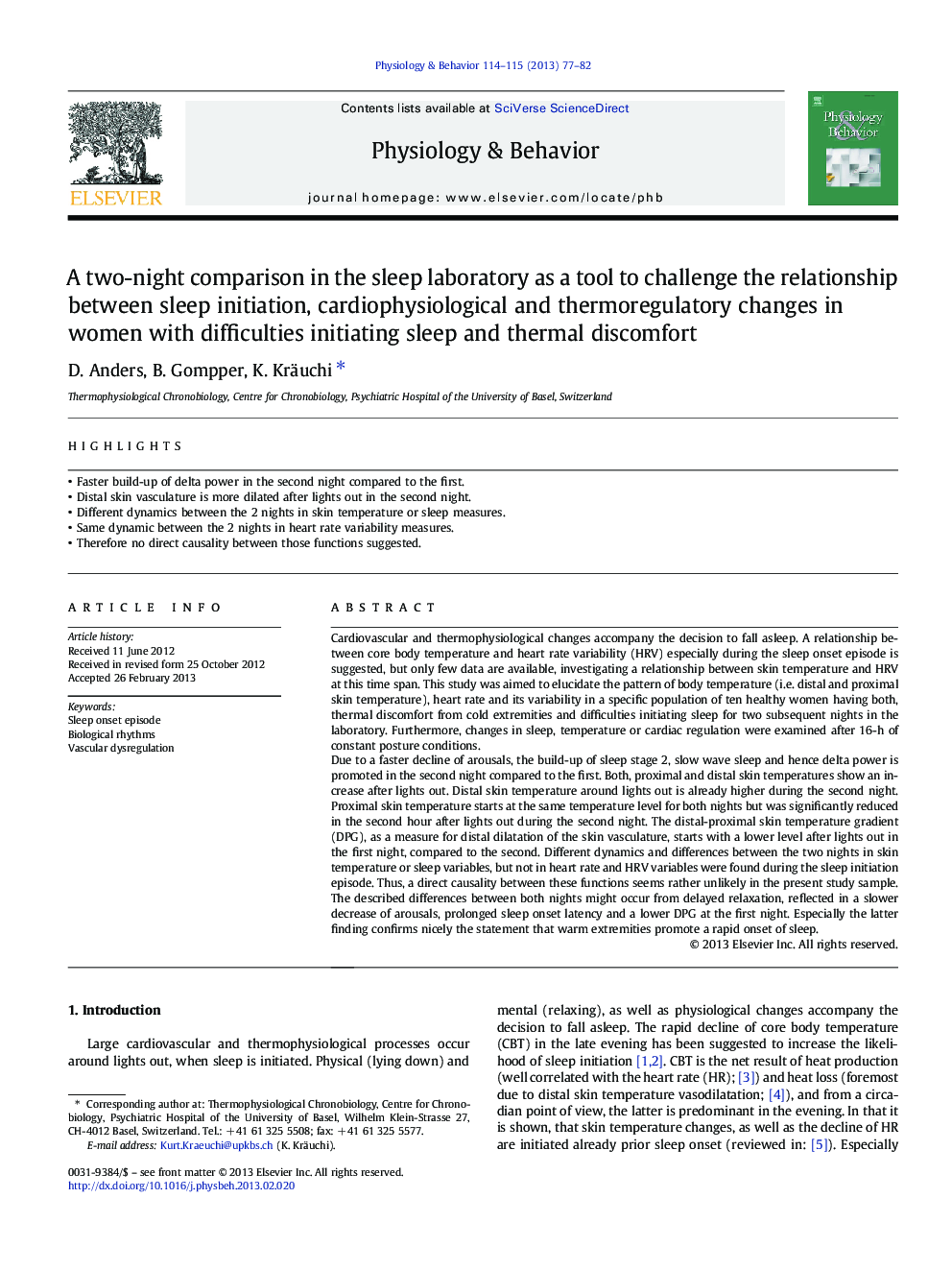| کد مقاله | کد نشریه | سال انتشار | مقاله انگلیسی | نسخه تمام متن |
|---|---|---|---|---|
| 2844367 | 1571201 | 2013 | 6 صفحه PDF | دانلود رایگان |

Cardiovascular and thermophysiological changes accompany the decision to fall asleep. A relationship between core body temperature and heart rate variability (HRV) especially during the sleep onset episode is suggested, but only few data are available, investigating a relationship between skin temperature and HRV at this time span. This study was aimed to elucidate the pattern of body temperature (i.e. distal and proximal skin temperature), heart rate and its variability in a specific population of ten healthy women having both, thermal discomfort from cold extremities and difficulties initiating sleep for two subsequent nights in the laboratory. Furthermore, changes in sleep, temperature or cardiac regulation were examined after 16-h of constant posture conditions.Due to a faster decline of arousals, the build-up of sleep stage 2, slow wave sleep and hence delta power is promoted in the second night compared to the first. Both, proximal and distal skin temperatures show an increase after lights out. Distal skin temperature around lights out is already higher during the second night. Proximal skin temperature starts at the same temperature level for both nights but was significantly reduced in the second hour after lights out during the second night. The distal-proximal skin temperature gradient (DPG), as a measure for distal dilatation of the skin vasculature, starts with a lower level after lights out in the first night, compared to the second. Different dynamics and differences between the two nights in skin temperature or sleep variables, but not in heart rate and HRV variables were found during the sleep initiation episode. Thus, a direct causality between these functions seems rather unlikely in the present study sample. The described differences between both nights might occur from delayed relaxation, reflected in a slower decrease of arousals, prolonged sleep onset latency and a lower DPG at the first night. Especially the latter finding confirms nicely the statement that warm extremities promote a rapid onset of sleep.
• Faster build-up of delta power in the second night compared to the first.
• Distal skin vasculature is more dilated after lights out in the second night.
• Different dynamics between the 2 nights in skin temperature or sleep measures.
• Same dynamic between the 2 nights in heart rate variability measures.
• Therefore no direct causality between those functions suggested.
Journal: Physiology & Behavior - Volumes 114–115, 10 April 2013, Pages 77–82